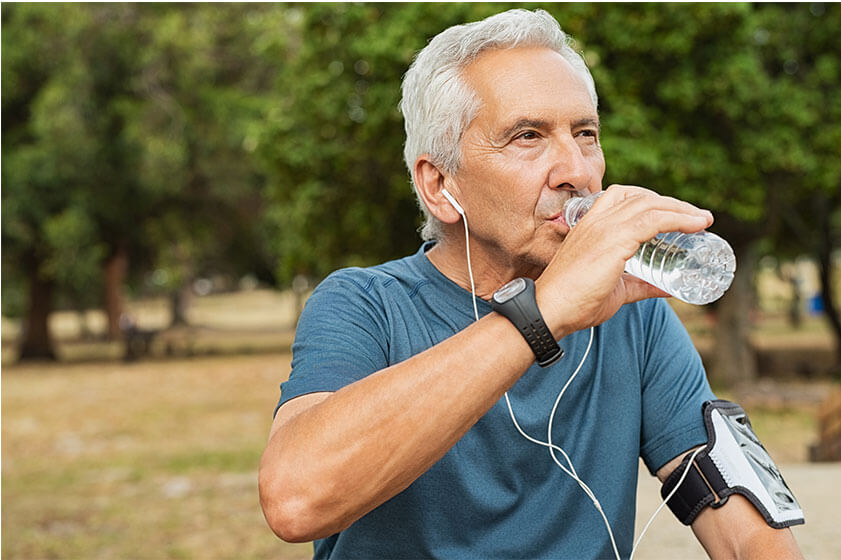Dehydration occurs when your body loses more liquids through urine and perspiration than you consume. It’s worrying as it can cause cramps, kidney failure, and other severe issues. You’re more likely to become dehydrated if you’re over 65 years old, particularly if you have a chronic condition. Excessive heat exposure, vomiting and diarrhea, and fluid disequilibrium caused by certain illnesses can all induce water loss. Stay on this page if you want to know how to prevent dehydration in older adults.
Watch Your Urine Colour
When you hit the washroom, take a brief look at the tint of your urine to see how hydrated you are. Instead of a deeper yellow or brown hue, you want your urine to be clear or straw-colored, preferably close to light yellow. Dehydration is indicated by a dark yellow appearance. Take that as a sign that you need to get some water as soon as possible.
Pay Attention to Your Body
Dehydration does not usually strike without warning. Migraine, exhaustion, and a reddish complexion are all physical indications of dehydration. You may also feel irritated and as if your vigor has been drained from you.
It’s easy to get caught up in daily routines and forget to pay attention to your thirst signals, but they’re your body’s way of telling you that you have to drink more water. A good solution is to keep a bottle of water close by and drink from it anytime, even way before you feel thirsty.
Increase Your Intake When Exercising
When you exercise at a vigorous tempo for long, your body requires more water. Get yourself up on the weighing scale before and after exercise to assess your sweat losses and water requirements. It’s ideal to lose less than 1% of your body weight throughout a workout. To recover, drink at least 16 fluid ounces of water for every pound dropped.
The fact that it’s warmer outside is also a sign that you need to drink up. It’s always preferable to have extra fluid when it’s scorching hot outside and you’re exercising outdoors. However, having an equation for exactly how much to drink is quite tricky. It is determined by things such as your body mass and the amount of perspiration you produce. Paying attention to your body signals will give you some definitive clues.
Eat Foods that Can Boost Hydration Fast
Foods like broths and soups can be both hydrating and healthy. For example, chicken broth is almost completely made up of water, meeting a significant portion of your daily hydration requirements. Adding a variety of vegetables, such as broccoli, mushrooms, and tomatoes may considerably boost the nutritional value too.
If the thought of drinking pure water makes you uncomfortable, try coconut water instead. It’s high in water content and electrolytes like potassium, sodium, and chloride. It’s also known to aid workout recovery thanks to its electrolyte content. Because many sports drinks are filled with processed sugar, sipping coconut water after a workout is a far healthier alternative.
When our bodies are deprived of water, our organs, cells, and tissues stop working properly, which can lead to serious consequences. Dehydration that isn’t treated right away might lead to unwanted shock to our systems. To minimize dehydration, active older people should load up on water.







